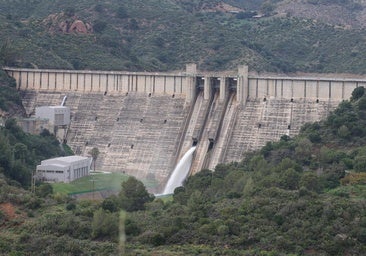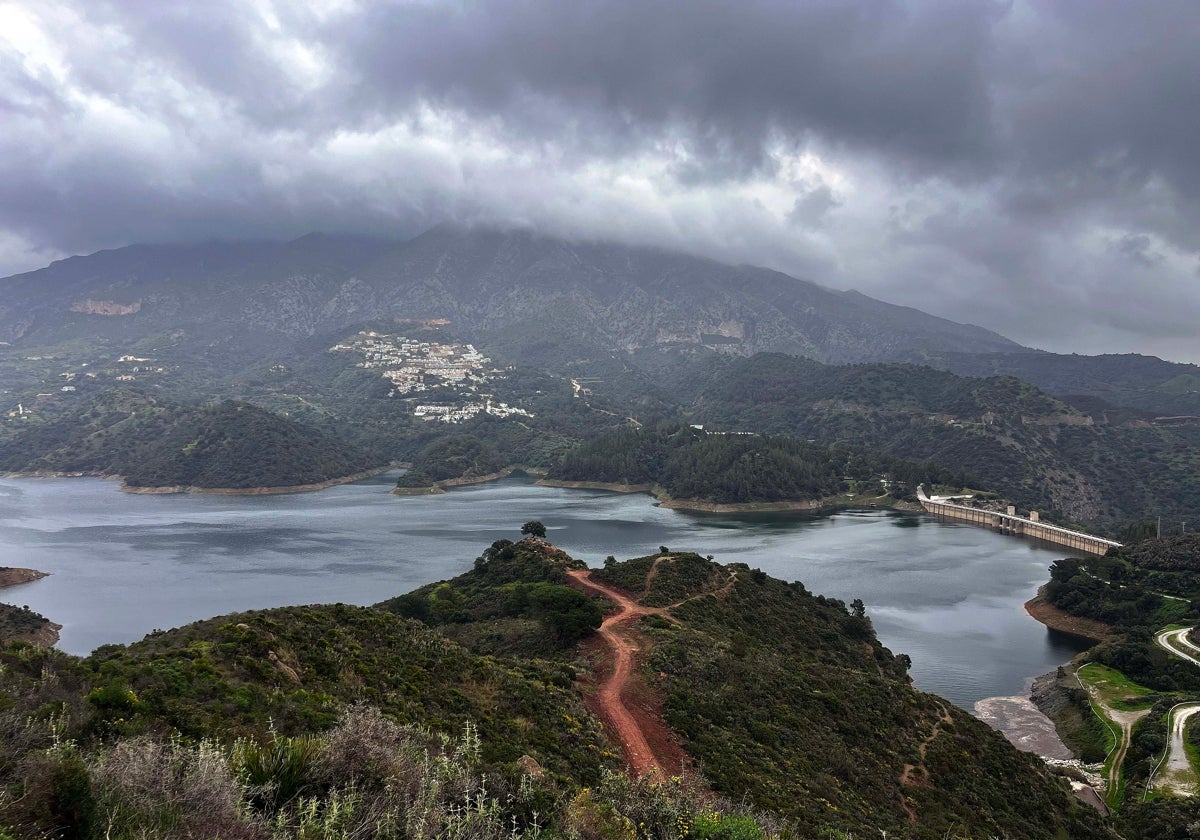Increasing the size of the reservoir on western Costa del Sol is a no-no, so what is the alternative solution?
The costings are in for Gibralmedina project, which has already drafted by the Junta de Andalucía
Recent images in the press have highlighted decades of neglectful investment that the authorities are now trying to repair. La Concepción reservoir on the Costa del Sol has to discharge a variable volume of water to maintain the flattened curve of runoff from the tail and the rainfall that pours in to be finely balanced against the measured outflows from the sluice gates. All the evidence points to the fact that the 57 million cubic metres it can store are insufficient for a western Costa del Sol that bears no resemblance to the one when the dam was opened in 1972.
In Spain's national hydrological plan it was proposed to increase La Concepción's storage capacity. Two alternatives were studied: the first was to raise the height and body of the dam and the second was to place another dam further downstream. These were ruled out for different technical, budgetary and environmental reasons. One of those reasons was that it would greatly increase the reservoir's flooding footprint, which would affect the Sierra de las Nieves National Park. The budget was well over 200 million euros.
Decades of waiting
The alternative, which was proposed decades ago, but which has been taken up by the current regional ministry of agriculture, is the Gibralmedina reservoir, to regulate the flows of the Guadiaro river. The project, which has already been completed, estimates a required investment of 778 million euros (including Spain's IVA sales tax). Of this, just over half would be for the dam itself. The rest would be for a powerful system of pipes to supply up to 15 million cubic metres a year back to the Costa del Sol.
This volume would guarantee water for two months, given that, between Torremolinos and Manilva, some 90 million cubic metres are needed annually. This supply now comes from La Concepción, the desalination plant in Marbella (its extension and renovation is in the final stages of completion) and from the wells in Fuengirola and Guadalmansa.
Treated water
Initially, the option of raw water to be treated by Acosol to make drinking water was considered. However, technical sources explained to SUR that the chosen alternative consists of connecting the Gibralmedina and Guadarranque dams, having the water treated by Arcgisa (the public water company of Campo de Gibraltar) at the DWTP (drinking water treatment plant) in Arenillas (Cadiz), then transporting it from there to the reservoir in San Enrique de Guadiaro (a work inaugurated by the Junta last Tuesday) and finally from this reservoir to Acosol's western branch of the mains supply network.
Operations and exchanges of water supplies between Arcgisa and Man have been commonplace for a long time, albeit at obviously much lower flows, typically less than 4 million cubic metres.
This idea would mean creating a real drinking water highway between the provinces of Cadiz and Malaga with key elements such as the pending extension of the Verde water treatment plant in Marbella and the pumping stations of Rojas (Churriana) and La Rosaleda that are now in operation. This would allow a continuous connection between Campo de Gibraltar and Axarquia. All this work falls to the responsibility of the Junta.
Juanma Moreno's announcement
The budget figure and more details were announced by Junta president Juanma Moreno during his recent visit to Campo de Gibraltar for the inauguration of the San Roque water supply pipeline. Moreno announced the start of the environmental impact assessment of the project, which will be key for Cadiz and Malaga as it will be located between the two provinces.
The Typsa-Inproes joint venture (the companies involved in the Gibralmedina project) has drafted the document at a cost of 2.2 million euros. During the work there was a modification to take into account certain requests from Acosol, the water company of the Mancomunidad de la Costa Occidental, to receive flows from the new build. The modifications took the project to 437,000 euros, an increase of 19.2% on the initial budget.
Transfer
"It is an undertaking that will allow the transfer of flow from the Guadiaro [river] to the Gibralmedina stream, which would provide a valuable 25 million cubic metres extra to the Guadarranque-Charco Redondo system, which in very dry years could increase this supply to 48 million cubic metres, which in turn would cover the existing demand of 28 million cubic metres per year for irrigation water", said Moreno, who was accompanied by regional agriculture minister, Ramón Fernández Pacheco.
Government aid
The work is declared to be of interest to the wider state and, for this reason, the Junta wants to negotiate with central government to support the building of this dam.
The budget, which includes IVA sales tax, as SUR has learned, includes three parts to it. The first consists of transferring the flow of the Guadiaro river to the Gibralmedina stream. The second involves building the dam itself, which will be made of loose materials and located between the Gibralmedina stream and Viña del Indiano. To give an example of the type of dam needed, El Limonero has similar characteristics. Dams of loose materials are those formed by rocks or loose, uncemented earth. The third leg is the network of pipes.
Agricultural uses
The design of the reservoir gives the same level of priority to agricultural use and supply to the east of Cadiz province as it does to Malaga province. The widening of the purpose to this reservoir to meet the aforementioned requests of Acosol has required new calculations for the pipelines, new geological studies, other tests, a revision in modelling the dam and the safety of the environment. The dam will reach a height of 80 metres wth a retaining wall length of 1,400 metres.


